'Everyone's so overwhelmed': Hurricane Ian survivors battle heat, FEMA, red tape, grief
First came the storm of a century.
Then came the grief, the predators, the red tape, the delays, the bills, the stress and the anxiety of rebuilding during hurricane season amid rubble from last year’s Category 4+ storm surge monster
The latest enemy for Hurricane Ian victims is brutal heat.
July was the Earth’s hottest month ever, a record that researchers attribute to climate change. In the Fort Myers area, it was the hottest July ever. The average high hit 94.1 degrees. And, as any local knows, 94 can feel 10 to 20 degrees hotter on a cloudless day in this oven of humidity.
For thousands of hurricane victims residing in RVs in barren lots in hard-hit coastal Lee County, it can be hard to find relief. Rick Borman, 61, and his wife Mary have been living in a 300-square foot trailer, “a metal box in the sun,” as he describes it, since January. The hurricane made their Fort Myers Beach cottage uninhabitable. One day, even with the AC running in the trailer, the temperature surged to 87 degrees. Last month, they installed an extra AC.
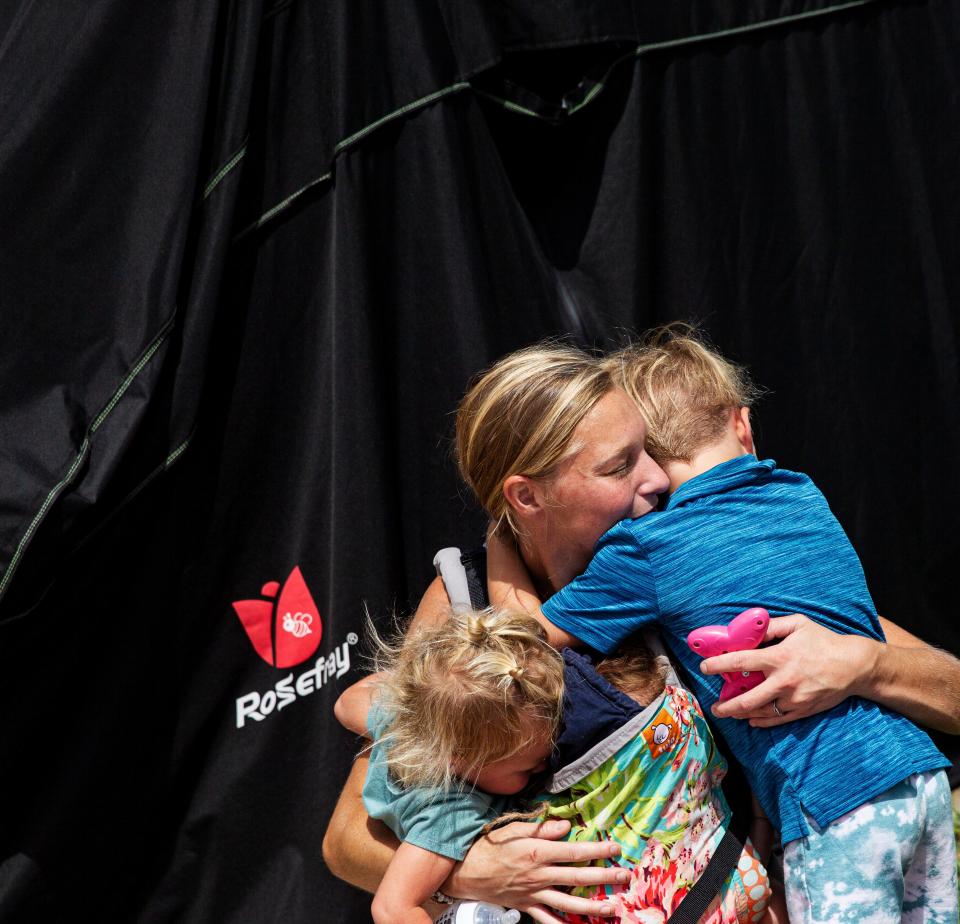
The Lee County Property Appraiser estimates about 15,000 properties were uninhabitable or seriously damaged by the Sept. 28 storm, leaving many families with inadequate housing.
More than 1,400 households are still living in FEMA or state-provided trailers in Lee County. That figure doesn’t include families like the Bormans who bought their own. Several RV dwellers reported maxed out or failing air-conditioning units. It’s even hotter for the smattering of victims still in tents or without electricity and cold water.
Between the heat and the unrelenting struggles of recovering from a natural disaster, many Hurricane Ian survivors are nearing a boiling point. Ideally, Borman wouldn’t be rebuilding during record-breaking heat, but July was when everything aligned: the insurance, the permit and the hard-to-find labor.
“Unless you're a rich guy, you don't start building until you get money from your insurance company. So, you’ve got to wait,” said Borman, who works in financial sales. His wife is a school secretary. “I'm not blaming anybody, whether it's the insurance companies or the city or FEMA, everyone's so overwhelmed.”
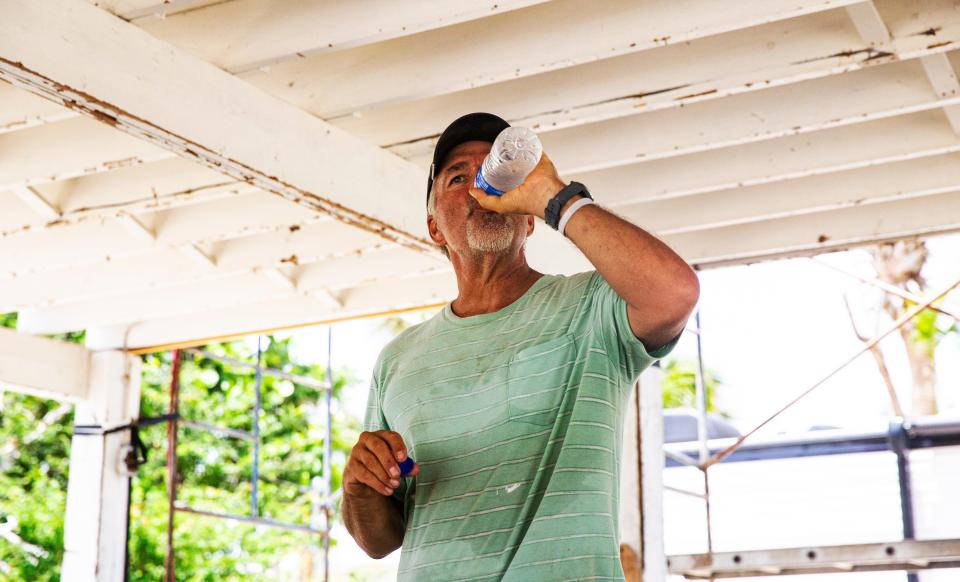
There are days he dreads the drive back to Fort Myers Beach, a place he now associates with loss. Two of his neighbors died in the storm. “You come over that bridge, it used to be my switch to happiness. And now it's like just a switch to grief and stress,” Borman said. “It's tricky for everybody down here. There’s still people that you talk to and they're not the same, maybe PTSD or something like that. I might not be the same.”
Where’s the social safety net for extreme heat?
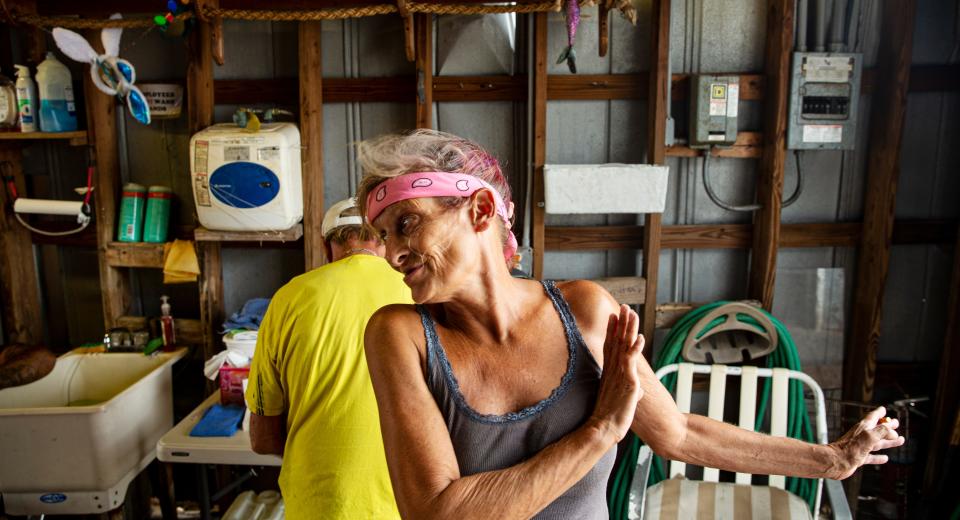
A visit to coastal Lee County turned up several residents without a place to cool off or reliable access to air conditioning. On Matlacha, Lori Coppola ran the AC in her trailer from an extension cord hooked to a neighbor’s house because electricity had not yet been restored to her lot.
After working on her AC outside, Coppola excused herself to duck inside her dark trailer. She was seeing stars.Down at the shrimp docks off Fort Myers Beach, Michele Bryant, 58, has been sleeping in a tent since Hurricane Ian. Her fan runs off a generator. “It’s hard as hell. I’m dealing with it. I ain’t got no choice.”
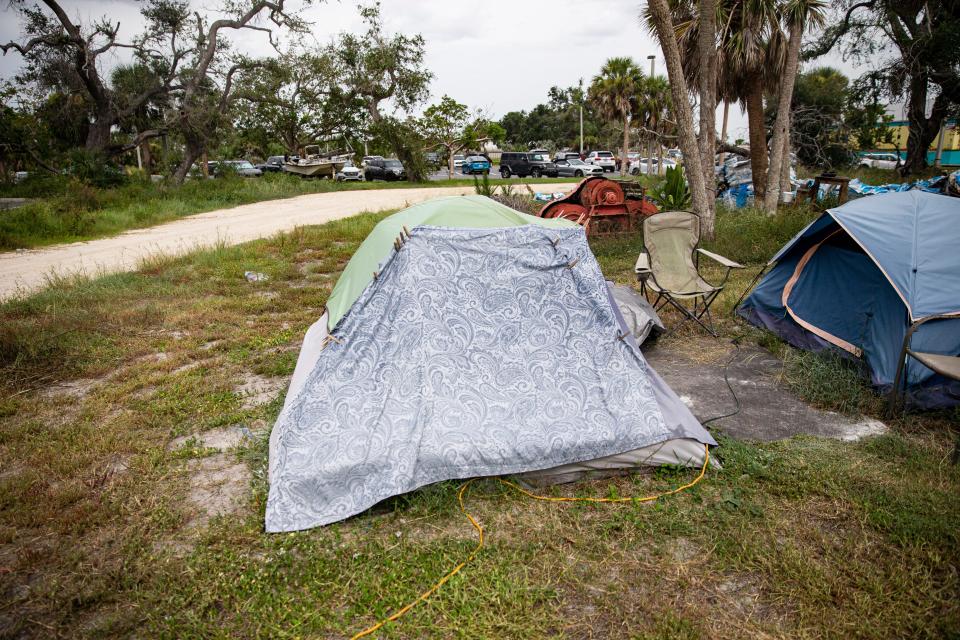
FEMA offered her a trailer, but it was too far from the docks, where she works, and she didn’t have a car. In July, she was rushed to the hospital to be treated for dehydration – twice.
There’s little in the way of a safety net to deal with extreme heat. On Fort Myers Beach, the places people could go to cool off like the library or churches are gone or undergoing repairs.
Love, loss, miracles on Fort Myers Beach Who said God never gives you more than you can handle?
Shrimp and Grit: Fighting to save the Fort Myers Beach shrimping fleet after Ian's devastation
Grace Lipps, 28, tries to keep her young children occupied with crafts, calls to family and friends, and TV but there’s only so much they can do inside their 45-foot RV on San Carlos Island. She’s also caring for her 15-week-old baby. Temperatures inside can rise into the 80s even with the AC.
“It's overworked. It will freeze up,” Lipps said. “I'll have to turn it off and let it sit for a couple hours. And then we have nothing on. It's just so hot. They're not made to be in this heat.” She cares for the children while her fiancé renovates storm-damaged homes, including another trailer they own.
On a recent day, Lipps tried to make her red-cheeked children happy. With baby Saxten on her chest, she set up a Bluey cartoon for 4-year-old Salem inside and inflated a small pool for 22-month-old Sayler outside.

It was a bittersweet scene. Sayler splashed on the lawn as massive trucks rolled by to haul away hurricane-wrecked homes down the street, where neighbors winced as they saw the shelters of so many memories crushed.
“At this point, we’re just taking it day by day and we're hoping we'll have the opportunity to continue being here — we love it, but honestly I don't know,” Lipps said, tearing up. “We're doing our best, we're working so hard and we're not seeing anything, we're just like going back. We're pretty much, at this point, just trying to survive. And I would like to thrive and survive.”
Stress, heat, FEMA and red tape
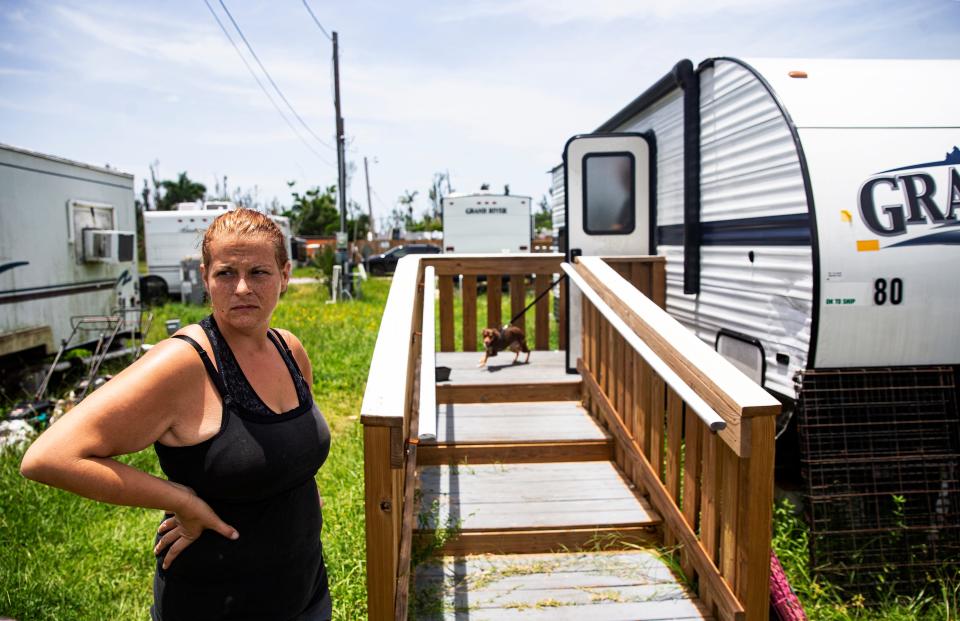
The Mayo Clinic says extreme heat can make a person feel stressed and on edge. Many Ian survivors would say the same and then some about dealing with insurance companies and government agencies after a hurricane.
“I’ll never ask FEMA for help again,” said Geri Mendoza, as she and her husband Tony, both in their 30s, prepared to move out of a FEMA-provided trailer. They had been sharing the 200-square-foot RV with their 13-year-old daughter, a 50-pound pitbull and a 10-pound chihuahua mix. It was tight.
They had recently been informed they needed to leave the trailer because it was in a special flood hazard area in Pine Island. (A FEMA spokeswoman said most households still needing a trailer opted to move to a safer location, but remaining families would not have their units removed.)
But the new location didn’t make sense to the Mendozas. It was only a few miles from their south Fort Myers mobile home that Ian filled with almost 8-feet of water, which put them in this precarious housing scenario in the first place.
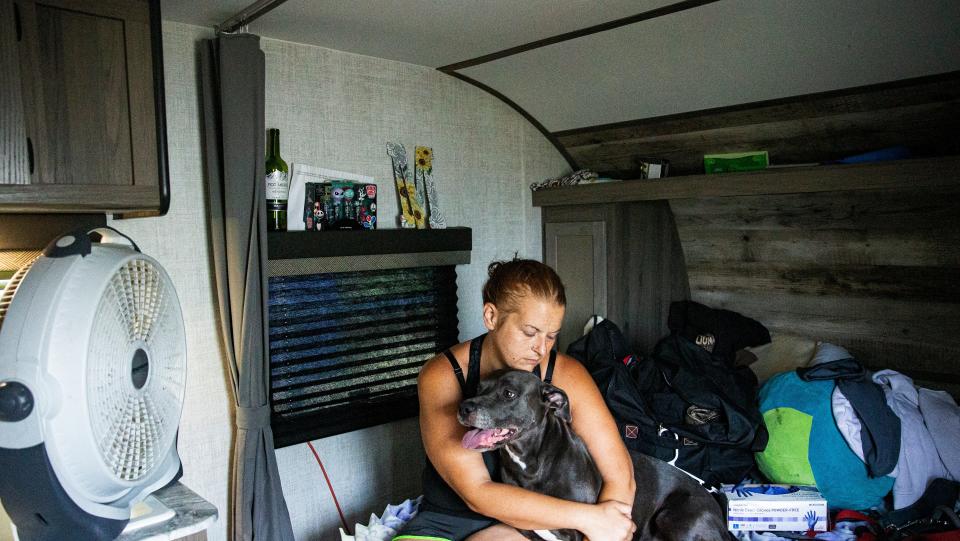
FEMA had been trying to find them an apartment. Nothing had panned out. It’s not easy to rent with two dogs, and the hurricane exacerbated the chronic affordable rental housing shortage in Southwest Florida.
So, they were moving into Tony's parents’ condo, where they would take turns sleeping on the couch. It was a step up from the cramped RV, which was hot though they kept the windows covered and ran two fans and avoided cooking until the evening.
“It’s every bit of 80 even with the AC on full blast,” Tony said.
Before leaving, Geri checked the dogs had enough water and promised, “We’ll come back and get y’all.”
Tony carried his ties for work and Geri toted their daughter’s Squishmallows to the packed car before they drove off into more uncertainty.
Living amid tragedy after Hurricane Ian
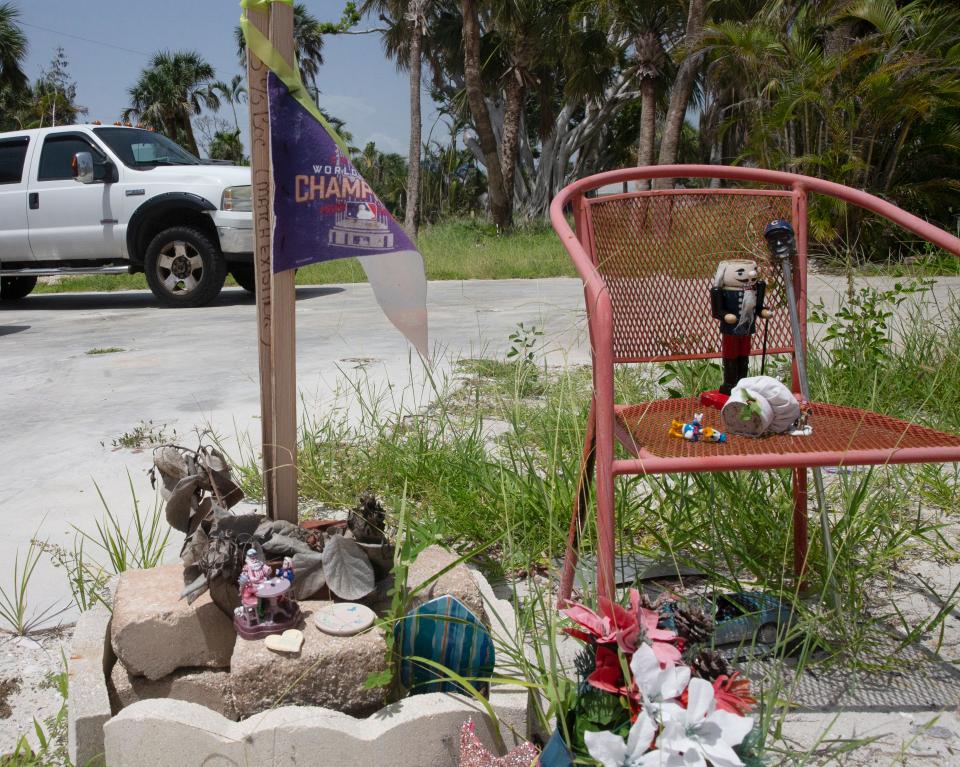
Rick and Mary Borman are rebuilding their beach cottage on Estero Boulevard near the vacant spaces where neighbors’ homes once stood and a memorial for Mitch Pacyna with faded flowers and a Cubs flag still stands.Mitch Pacyna lived next door.
Before the storm, Rick Borman asked him, “What are you gonna do?”
“I’ve evacuated so many times that I didn’t need to, and that storm is 100 miles out there right now,” Borman recalled Pacyna telling him.
Then Ian turned and Borman saw his neighbor’s final Facebook post, “OK, WE’RE TERRIFIED.”
Another neighbor, Marti Campbell, died during the hurricane too.
Mitch Pacyna remembered: 'He was just a part of so many people's lives'
Beneath the Bormans' stilted home is a metal box they retrieved with papers belonging to Campbell — just in case there’s something important inside that a relative would want.
“There's huge differences or degrees of tragedy here,” Rick Borman said. “Our neighbors lost their lives. Some of our neighbors lost everything. Their house is gone but they're alive. Or they still have their house, but they lost everything in it: important papers, pictures, photographs, their history. It's all gone. Our house got the crap beat out of it, but it's still here and we lost our stuff.”
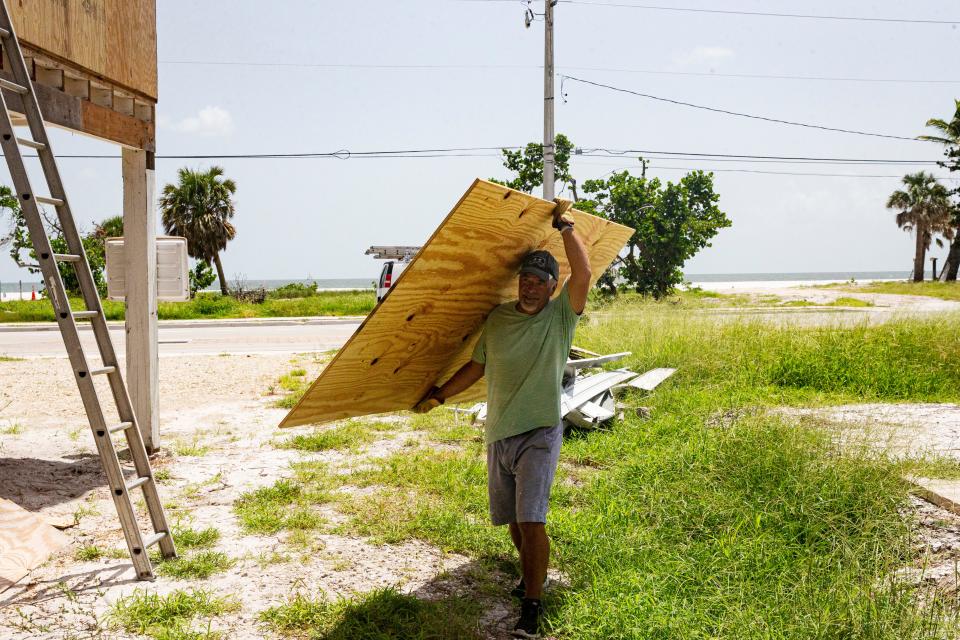
“I'm not minimizing ours, because it's really overwhelming and when you look around at all the destruction when you go to the beach and then, up that way, it’s business usual off the beach. It's so depressing.”
Survivors feel less optimistic as they battle insurance companies, red tape and building delays and are forced to dip into their savings to rebuild or get by.
“They’re losing that sense of security they had,” said Dr. Ronald Smallwood, a psychiatrist with Lee Health/Lee Physician Group. “They spent 20 years with a plan in place and that one day tore up their entire plans.”
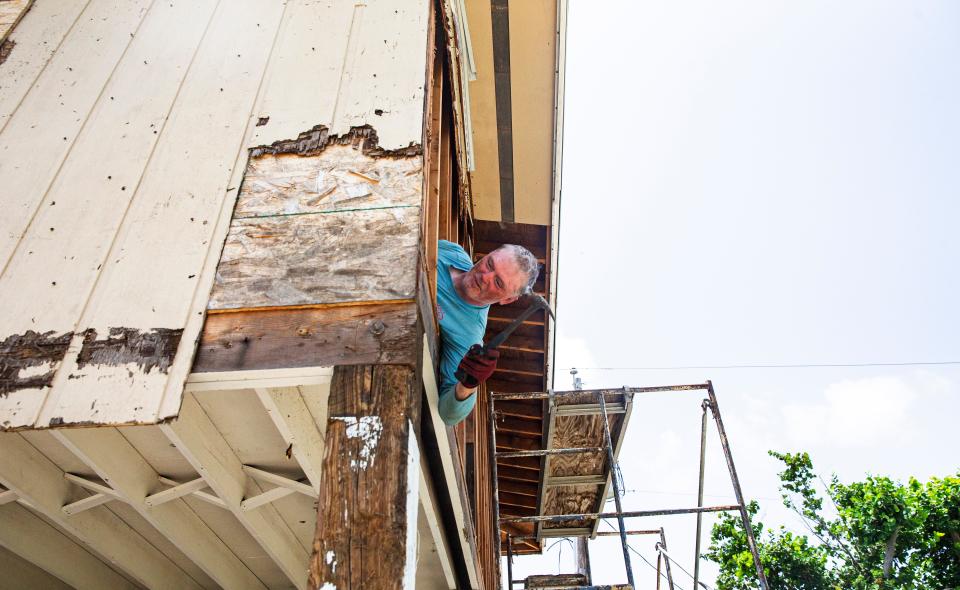
Research has shown natural disasters can increase mental illness from 5% to 40%. After Hurricane Katrina, surveys found a significant increase in anxiety, depression, and post-traumatic stress disorder.
Said Borman: “I’ve never been hyper-emotional but I have a lot of anxiety dealing with all this stuff.”
But he and his wife don’t want to give up their 1970s cottage, the kind of humble abodes that made Fort Myers Beach charming. Despite everything on their plates, they still walk to the beach for sunset cocktails and kayak in the bay while fishing out storm debris.
This July afternoon, though, was about reconstruction despite the 94-degree heat. Borman was battling another element of the weather. He wanted to get the siding up to protect his home from the rain.
Borman lugged large sheets of plywood to the remodeler. Both men were drenched in sweat. In less than three days of work, they had guzzled 20 bottles of Gatorade and more than that in water. They still suffered bouts of dizziness and cramping. Yet Borman smiled, passing a beam with paint samples of lavenders and corals under consideration for the cottage. “This is a really good first step — we finally get to start putting some of it back together.” He pointed to the RV. “That's 300-square feet. This is 1,000. It’s gonna feel like a palace.”
Janine Zeitlin is a reporter in Southwest Florida and can be reached at jzeitlin@gannett.com.
Support local journalism by subscribing.
This article originally appeared on Fort Myers News-Press: Hurricane Ian survivors battle Florida heat, FEMA, red tape, grief

